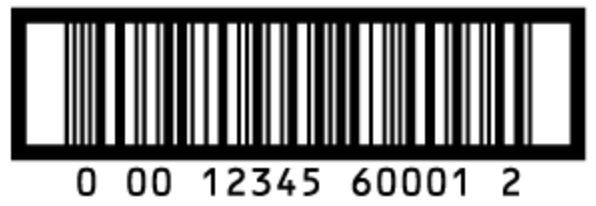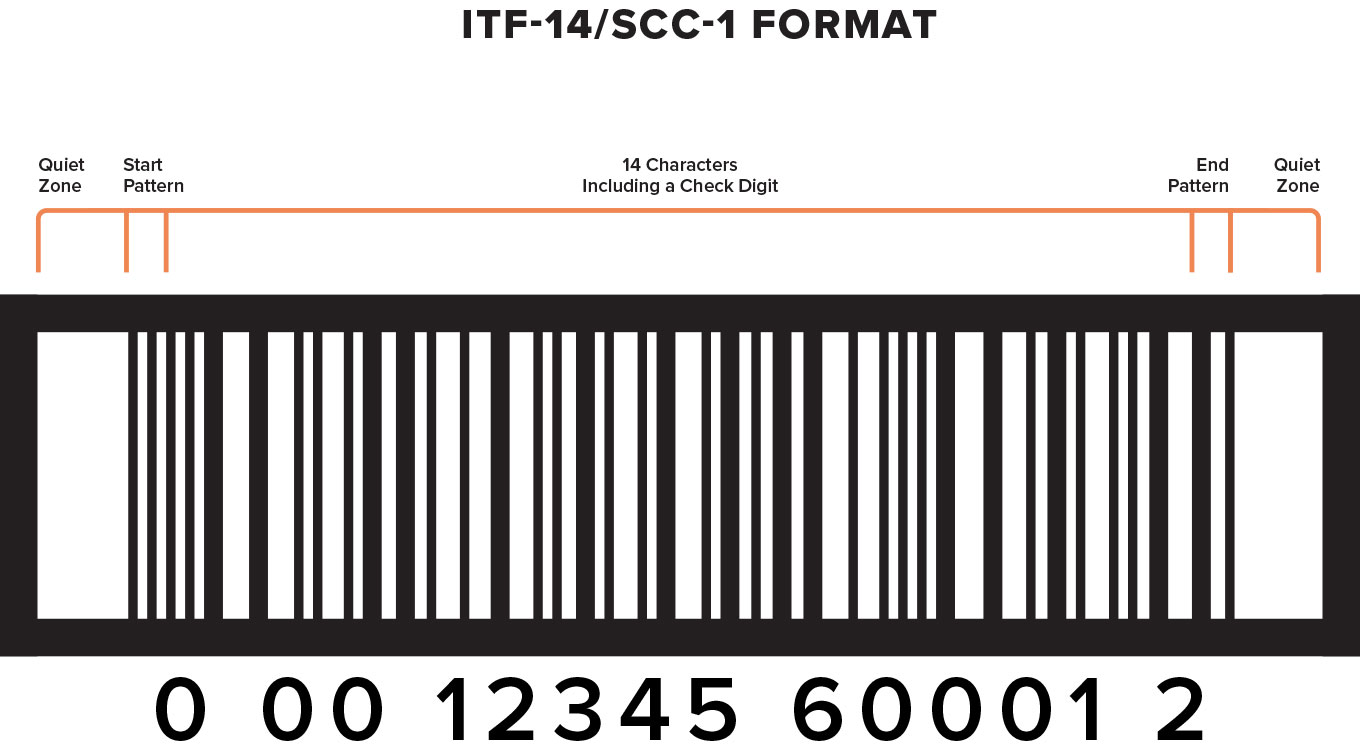ITF-14/SCC-1 Barcodes
ITF-14/SCC-1
ITF-14/SCC-1 barcodes are a variant of the Interleaved 2 of 5 symbology, and they’re also used to produce Shipping Container Symbols (SCCs). The name ITF-14 is a combination of the symbology type. The “I” stands for interleaved, the T for two, and the F for five. The number 14 represents the total number of digits in the barcode. This sets it apart from typical Interleaved 2 of 5 barcodes, which can be any length to encode the required information.
Unique to the ITF-14/SCC-1 format is the use of a “Bearer Bar.” This is a thick black border which completely encircles the barcode. This border is used to equalize printing plate pressure and improve the overall accuracy and readability of ITF-14/SCC-1 codes. These Bearer Bars are mandatory when available space makes their inclusion possible.

Format
This barcode format supports only number digits 0-9. It contains five key elements:
- A leading quiet zone at least 10 times the length of one narrow bar.
- The start pattern, which follows the pattern of narrow bar/narrow space/narrow bar/narrow space.
- Seven pairs of characters for a total of 14, including a check digit.
- The stop pattern, which follows the pattern of wide bar/narrow space/wide bar.
- A trailing quiet zone.
Unlike traditional 2 of 5 barcodes, which only use bars to encode information, the ITF-14/SCC-1 barcode represents each character by using five elements which are either bars or spaces. In each case, three elements are wide and two are narrow, giving rise to the name “2 of 5.” Digits are always encoded as pairs — one in bars and one in spaces — and this format contains no inter-character spaces.

Common Use Cases
ITF-14 barcodes are typically used for warehouse packaging, while the SCC-1 variant is used on shipping containers. Because the barcode always encodes 14 digits and wherever possible uses Bearer Bars, it’s well-suited for applications that involve products or containers being continually moved and transported, since it’s easy to tell if the symbol has been compromised. In many cases, advanced barcode reader technologies can still read damaged ITF-14/SCC-1 codes.